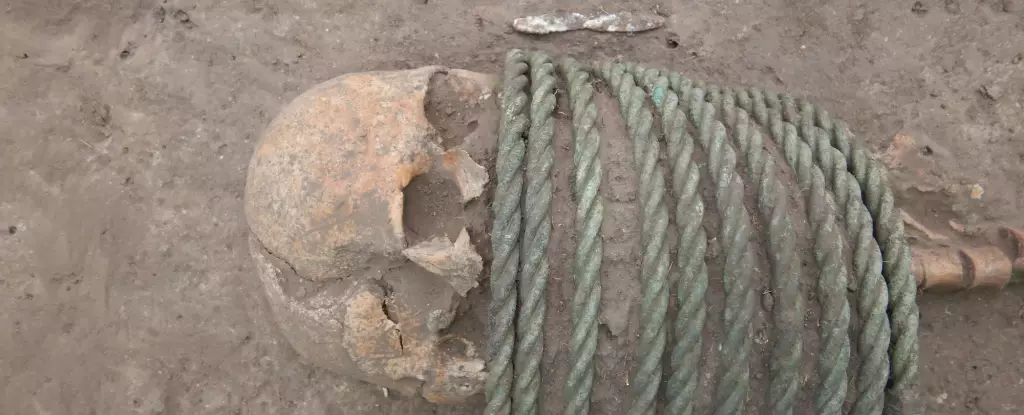Archaeologists have recently made an intriguing discovery in Kyiv, Ukraine – a 1,000-year-old cemetery that offers a unique window into the Dark Ages. This cemetery, believed to have been a pagan-era burial site, has shed light on a forgotten chapter of European history. With over 107 skeletons found, along with various artifacts and adornments, the excavation has provided valuable insights into the lives and rituals of the people who lived in this region during that time.
Unveiling the Past
The mass grave, carefully adorned with ceremonial buckets on the feet and rings around the necks of the deceased, has captivated archaeologists. As they unearthed the remains, they also discovered a treasure trove of artifacts, including axes, swords, spears, jewelry, bracelets, and even food remains such as eggshells and chicken bones. These findings offer a glimpse into the material culture and customs of the people who were laid to rest in this cemetery.
A Window into Kyivan Rus
Vsevolod Ivakin and Vyacheslav Baranov, the leading researchers of the excavation, have identified the weaponry found as typical for Kyivan Rus, a medieval political federation in modern-day Belarus and northeastern Europe. The presence of these weapons suggests the influence of the region’s political dynamics on the burial rituals and customs of the time. Additionally, a stone altar discovered at the site indicates the possibility of pagan or early Christian practices being carried out in this sacred space.
One particularly intriguing aspect of this discovery is the distinction between male and female skeletons. While both genders were found in the cemetery, only the females were adorned with elaborate neck rings, which the researchers believe served as social markers. These adornments provide a fascinating glimpse into the social hierarchies and gender dynamics of the time. The burial site also raises questions about the significance of these distinctions and the roles that individuals played within their community.
Connections to Baltic Cultures
Curiously, some of the artifacts uncovered in the cemetery bear similarities to those found in the Baltics. This connection suggests possible cultural and trade exchanges between the regions during this period. Volodymyr the Great, who ruled over territories that extended to the Baltics, converted to Christianity around 987. This finding hints at a religious shift and the introduction of Christianity in Eastern Europe, underscoring the interconnectedness of various historical events and the spread of religion across the continent.
According to Baranov, the nature of this small and closed group of individuals, as revealed by the cemetery, was uncommon for its time. The late Viking Age and the ongoing conversion to Christianity played significant roles in shaping the social dynamics and practices of the people buried here. It emphasizes the importance of studying European history as a whole, allowing us to form a more comprehensive understanding of the region’s past.
Challenges and Continuity
Despite the challenges posed by the ongoing war, the archaeological project in Ukraine began in 2017 and has continued through 2022 and 2023. The dedication of the researchers, despite the personal sacrifices and dangers they face, highlights their commitment to unraveling the mysteries of the past. The dwindling number of team members due to casualties and mobilization has undoubtedly hindered the excavation process. Nevertheless, the collaboration between multiple research centers and the support from organizations such as the German Research Foundation have ensured the continuity of this essential work.
The discovery of the 1,000-year-old cemetery in Kyiv, Ukraine, has offered a glimpse into the Dark Ages and the lives of the people who lived during that time. By carefully examining the skeletal remains, artifacts, and burial practices, archaeologists have pieced together a narrative that speaks to social, religious, and cultural shifts in Ukrainian history. This excavation serves as a testament to the importance of studying European history as a whole, enabling us to understand the complexities and interconnectedness of our past.

Leave a Reply